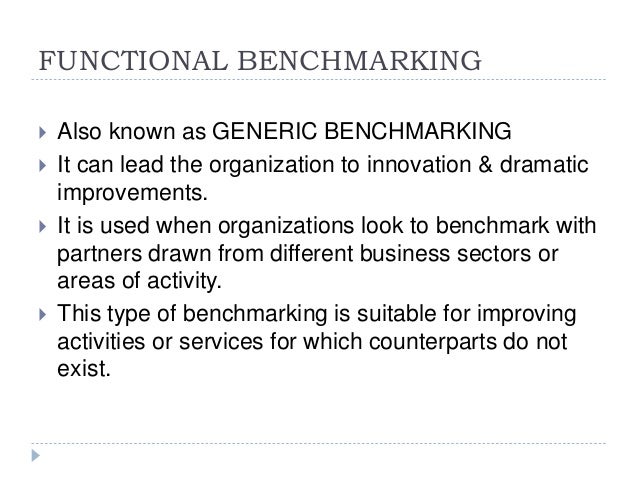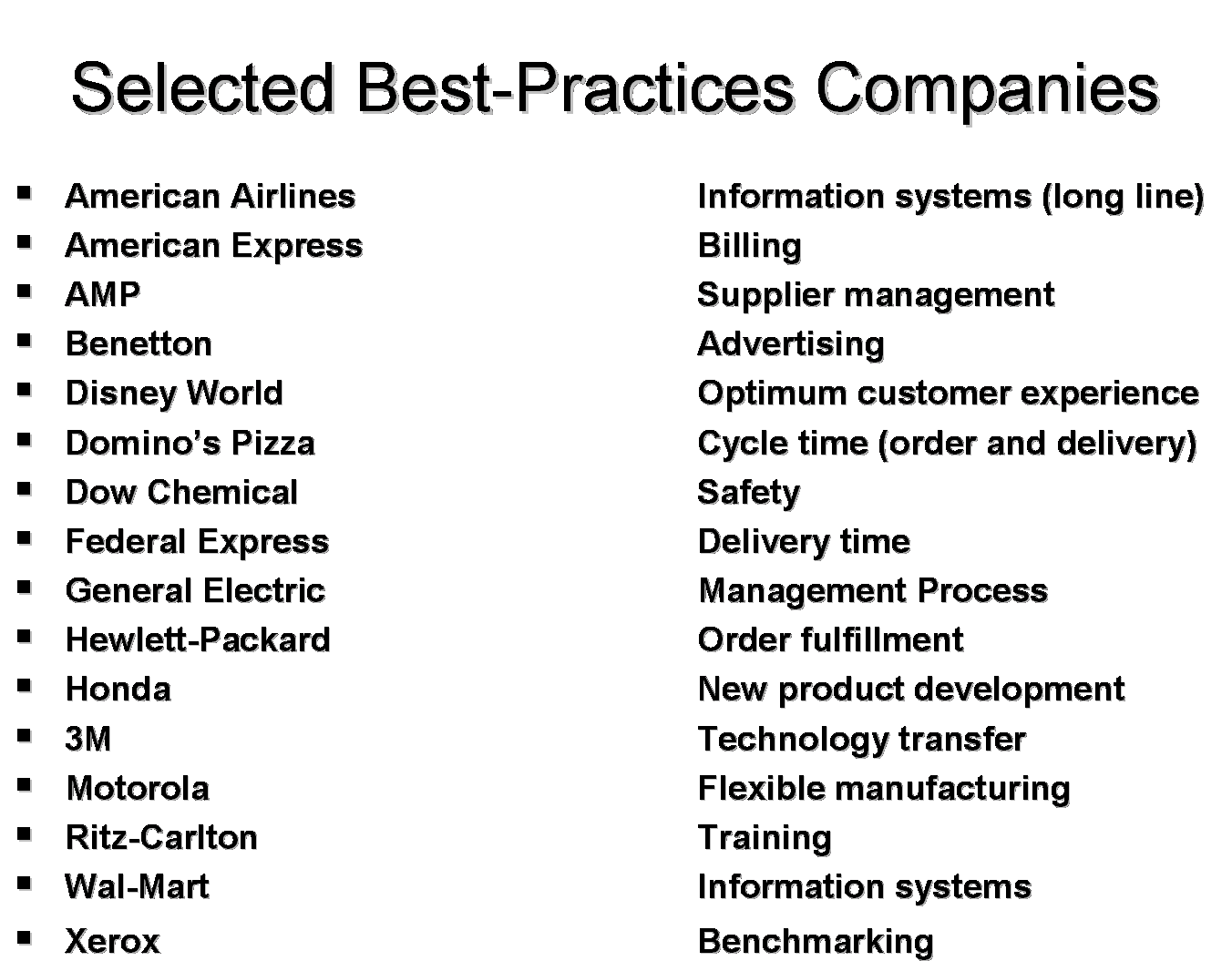The most common driver for benchmarking comes from the internal perspective that a process or approach can be improved. External benchmarking is what most people think of when the term benchmarking is used.

Benchmarking
Comparing your business performance against certain reference points is a popular and potentially powerful way to glean insights that can lead to improved performance.

Internal benchmarking examples. The common types of internal benchmarking. The results will be shared with the first and second shift management and a plan of action is set to determine where improvements can be made. For example a hotel management company which operates several hotels of the same brand will have access to operational and financial data for all of these.
4 types of benchmarking in healthcare the benefits of each 1. Organizations will collect data on their own performance at different points in time and under different circumstances and identify gaps or areas for strengthening. In some cases benchmarking results are also used in promotion and sales materials.
For the purposes of accreditation the internal benchmarking standard does not apply to organizations with fewer than three practitioners. Internal benchmarking takes place between departments divisions or offices within the same hospital or clinic. The term benchmarking is most commonly associated with comparing your results to external entities such as a competitor or industry.
Internal benchmarking is the process of comparing internal results in a systematic and standard way. When benchmarking externally organizations seek projects from other companies or perhaps in the case of doe from separate program offices for comparative analysis. The primary reason because the benchmarking data is more readily accessible.
Benchmarking is the process of comparing your results to peers in your industry. The following are illustrative examples of benchmarking. The aim is to find the best practice available to get the job done with minimum effort or resources.
Internal benchmarking is a process in which a company or an organisation looks within its own business to try and determine the best practice or methodology for conducting a particular task. Benchmarking can be internal or external. It is an essential business activity that is key to understanding competitive advantages and disadvantages.
When benchmarking internally organizations benchmark against their own projects. The 2011 handbooks glossary defines internal benchmarking as a comparison of performance within an organization such as by physician or department or over time. Organizations with multiple locations will often start with internal benchmarking.
External benchmarking is useful when data is available and youre trying to catch up to the competition. That analysis is called internal benchmarking. The different types of benchmarking examples and easy explanations.

Benchmarking In Tqm With Examples And Benchmarking Tools

Benchmarking Total Quality Management

Benchmarking Smi

What Is Benchmarking Types And Limitations Of Using It

What You Need To Know About External Benchmarking

Overview Of Benchmarking Accendo Reliability

Ibima Publishing A Survey Of Benchmarking Practices In Higher

Logistics Structure2 Logresult

Benchmarking Tool Internal Audit Function Public Sector



.jpg)

























:max_bytes(150000):strip_icc()/ana-white-free-workbench-plans-580e263d3df78c2c7344f1d4.jpg)













